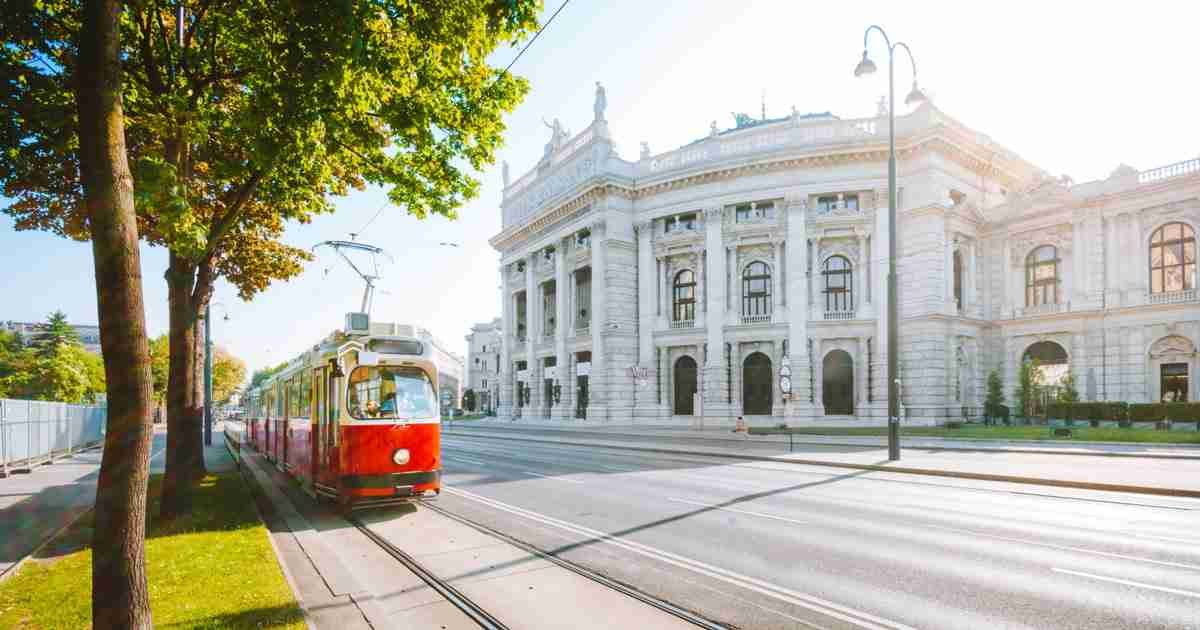The imposing Burgtheater, or "Burg" for short, is Austria's national theater and at the same time the largest spoken theater in Europe.
In this guide to Burgtheater you will find out what you can do there, the history of the theater, the schedule with the current program and information about how to get there, tickets and guided tours.
What Can I Do in Burgtheater?

As the most important theater in Austria and the most important venue for German-language drama, Burgtheater offers a very special theater experience.
You can admire classical and modern pieces at one of the dramaturgical theater performances. An unforgettable evening at the theater can be enjoyed in the atmosphere of the historic building.
But the building itself is reason enough to visit. The magnificent building, designed by the architects Gottfried Semper and Karl Freiherr von Hasenauer, has a façade in the Italian High Renaissance style and an opulent interior.
All this and more can also be admired on a guided tour that provides insight into the art, architecture, history and organization of the house.
Admission, Tickets and Guided Tours

- Performances: The current performances with ticket sales can be found here.
- Guided Tours: If you want to take a look behind the scenes of the traditional theater, you can do so on a 1-hour tour in German or English. More about this here.
Schedule with the Current Program

Burgtheater is a classic repertory theater with daily changing performances. It has a modern schedule, but also features many Austrian classics.
The schedule with the current program of Burgtheater can be found on the theater 's website.
How Do I Get to Burgtheater?

Burgtheater is on Ringstrasse, directly across from the Vienna City Hall.
You can easily reach it by public transport. The best way to get to the theater is to take tram lines 1, 71 and D to Rathausplatz/Burgtheater.
Alternatively, you can also take the U3 to Herrengasse or the U2 to Schottentor.
History of the Theater

The origins of Burgtheater go back to 1741. At that time, a ballroom adjoining the Imperial Palace was converted into a theater by order of Empress Maria Theresia.
In the years that followed, this developed into one of the most important addresses for German-language acting in Vienna. In 1776 Joseph II, the son of Empress Maria Theresia, named the theater the "German National Theater". From 1794 to 1918 it was known as the "Imperial-Royal Court Theater next to the Castle".
It was not until 1888 that the venue moved to its current building on Vienna's Ringstrasse. The magnificent building, built according to the plans of Gottfried Semper and Karl von Hasenauer, was received with great enthusiasm due to its breathtaking design and modern technology. It has been called Burgtheater since 1919.
Shortly before the end of the Second World War, however, the building was severely damaged. After bombing, it burned out almost completely. Fortunately, the valuable ceiling paintings and a large part of the foyer remained largely undamaged.
After reconstruction, the “Haus am Ring” was reopened in 1955 and has enjoyed great popularity ever since.
Today, the magnificent foyer with hand-painted stairs is a particular highlight. Valuable ceiling paintings by Franz Matsch and the brothers Gustav and Ernst Klimt as well as the 18 meter high relief "Adorer of Bacchus" by Rudolf Wyer adorn the interior. There is also a sculpture collection and a gallery of honor with portraits of famous members of the ensemble.
Contact
- Address: Universitätsring 2, 1010 Vienna
- Subway: U3 Herrengasse
- Website: https://www.burgtheater.at/

